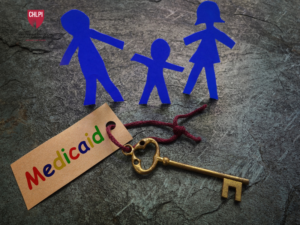This blog post was written by Sophie DeBode and Noelle Musolino, students in the Food Law and Policy Clinic.
On September 28th, for the first time in fifty years, the Biden-Harris Administration hosted a White House Conference on Hunger, Nutrition, and Health. The White House announced its goal of ending hunger and increasing healthy eating and physical activity by 2030 so fewer Americans experience diet-related diseases. To advance this goal and build on the federal government’s existing work to address hunger and diet-related diseases, the Biden-Harris Administration’s National Strategy on Hunger, Nutrition, and Health identifies ambitious and achievable actions the Administration will pursue across five pillars: 1) Improve Food Access and Affordability, 2) Integrate Nutrition and Health, 3) Empower all Consumers to Make and Have Access to Healthy Choices, 4) Support Physical Activity for All, 5) Enhance Nutrition and Food Security Research.
The Harvard Food Law and Policy Clinic (FLPC) commends the White House on the Strategy. FLPC contributed recommendations for the Strategy during its development, some of which address food recovery and redistribution. Several elements included in the Strategy also reflect combined advocacy through the U.S. Food Loss and Waste Policy Action Plan released in spring 2021 with signatories from various NGOs, businesses, and state and local government officials.
While the Strategy does not include all of FLPC’s recommendations, it does incorporate both action points directly related to food loss and waste (FLW) as well as action points that represent opportunities to promote food waste reduction. This is necessary because any discussion of hunger, nutrition, and health must be viewed amidst the seemingly contradictory phenomenon of large-scale societal food waste. As some people struggle to get the macro- and micronutrients they need, 35% of food in the United States is wasted. As the Biden administration decides to tackle issues surrounding food security in a national strategy, we must grapple with the fact that, in the United States, we spend $408 billion annually on food that is never consumed. The inclusion of FLW related recommendations in the Strategy is a great step towards reducing FLW throughout the food chain and presents many opportunities for future advocacy.
Below we have highlighted action points from the Strategy that either directly relate to food waste reduction or represent an opportunity to promote food waste reduction strategies.
The action points most relevant to FLW fall under Pillar 1.B., which focuses on reducing barriers to food recovery to “prevent food loss and waste across the food supply chain and help ensure safe, good quality food gets to those who need it most.” For one, the Environmental Protection Agency, the Department of Agriculture (USDA), and the Food and Drug Administration commit to creating a whole-of-government strategy to reduce food waste. A coordinated strategy between these agencies will be a great way to coordinate food waste reduction across the administration, allowing agencies with varying areas of expertise to contribute to reducing food waste. Additionally, the strategy commits the Food and Drug Administration to work to include food donation in the FDA Food Code. This is an exciting and welcome development which comes after several years of advocacy. (See our report on food safety for food donations here.)
The strategy also commits the Department of the Treasury to make the “enhanced charitable deduction calculation” easier to understand. Food donors often allocate substantial time and money to harvest, package, transport, and deliver food products to donees. Under the enhanced deduction, a donor may be able to deduct up to twice as much for their food donation as they would be able to deduct under the general deduction that applies for in-kind donations of other products. This makes food donation more cost effective. Clarifying the enhanced charitable deductions that are available for food donation can help ensure businesses know how they can make this deduction.
The strategy also includes “Calls to Action for a Whole of Society Response” and under Pillar 1 suggests that “State, local, and territory governments should enact food waste reduction and recovery policies such as providing tax incentives to food donors.” While some food waste and food recovery policies would be most effective if undertaken by the federal government, in the absence of such federal action, states can fill these gaps. For example, states should standardize and clarify date labels by creating a dual date labeling scheme. Further, states should expand their liability protection laws to provide liability protection to food donors that donate food directly to end recipients and to food donors and food recovery organizations that charge end recipients a nominal fee for food. In the absence of policies like these, people are disincentivized from donating because of procedural barriers and the inability to recuperate the cost of actually getting food to an end recipient as opposed to just throwing it away easily and for free.
A series of action points incentivize spending existing funding streams to support food recovery organizations orproviding guidance for how such funding streams can support food recovery organizations’ infrastructure needs. For example, the Strategy calls for food distribution support in the Department of Housing and Urban Development’s affordable housing developments, tribal communities, hospitals, and Temporary Assistance for Needy Families. When implementing these goals, agencies should incentivize relevant actors to source food from food businesses that would otherwise waste those foods, rather than only procuring new foods. When they do procure food, these actors should prioritize procuring from local producers and ensuring procured food travels the least amount possible between producer and end consumer to reduce the amount of food lost due to spoilage.
Additionally, Pillar 1.A. directs USDA to invest in food and farm businesses in the form of financial and technical assistance to support food distribution, particularly in underserved communities. It is great to see the USDA recognizing the critical role they will play in investing in local and regional food systems to be more equitable and achieve national goals around hunger and nutrition. By supporting more food hubs and distribution and processing needs, the USDA has an opportunity to address on-farm and post-harvest food loss and waste. Across the food supply chain, the USDA’s investments should also be used to support businesses and farms that are investing in food waste reduction techniques and that are participating in food donation, and they do nod to supporting food banks in this commitment. The USDA can also support food recovery infrastructure through grants to food recovery organizations to cover transportation, processing, and storage costs. The grants could be used to finance staff training, to purchase appropriate equipment such as facilities and refrigeration, and to generally scale food recovery efforts.
The White House also decided to utilize an enormous opportunity to educate the over 42 million people who receive SNAP benefits each year through SNAP-Ed. The strategy directs USDA to promote the digital MyPlate’s Shop Simple tool for people to find nutritious foods within budget and expand SNAP-Ed Connection’s host of educational resources surrounding health and physical activity.
Educating consumers is critical to ending food waste as 37% of food waste in the US comes from homes. With SNAP-Ed, the government has the ability to advance food waste and food waste prevention while in no way diverting resources or attention away from the primary objectives of the program, which is improving nutrition outcomes. The refresh and expansion of SNAP-Ed Connection could include adding information on best practices to reduce food waste—such as how to properly store leftovers, how to use some ingredients that people receiving food donations may be unfamiliar with, and how to interpret date labels. SNAP-Ed can teach consumers how to get the most out of their food dollars by properly storing perishable items, reusing, and repurposing leftovers, and ultimately reducing food waste.
In addition to releasing the Strategy, on the day of the Conference, the White House announced massive new commitments by business, civic, academic, and philanthropic leaders to achieve the Strategy’s goals. A number of private sector commitments promise to donate meals to food insecure populations, sometimes explicitly referencing the need to source food from entities with surplus food. Other commitments relate to food or nutrition education, which could include FLW education. Notable FLW related commitments include those by DoorDash to assist food recovery organizations in 18 cities provide free delivery to communities, FMI to donate 2 billion meals to food recovery organizations, Hy-Vee to deliver 30 million meals to vulnerable communities by 2025, Publix to work with Feeding America to establish 22 free, mobile food pantries and carry out a food donation campaign, and Rethink Food to rescue 2 million pounds of excess food for 5 years and divert 10 million pounds of excess food by 2027.


Health Law & Policy, Commentary
Day One Executive Orders: How Will They Impact Health Care Access? – Health Care in Motion
January 23, 2025